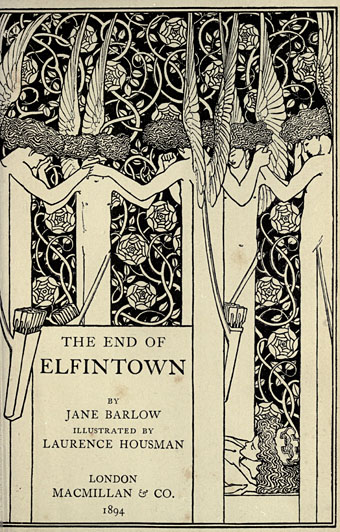
More Laurence Housman, and a book I’d not seen before. Jane Barlow’s The End of Elfintown (1894) is a typical piece of Victorian fairy poetry—her “elves” are also flower-dwelling “Fays”, and Oberon is mentioned—but Housman’s renderings give a very different impression. In place of the usual delicate creatures he shows a very sensual company, all satyr ears and enormous Pre-Raphaelite manes. The frontispiece is very Beardsley-like, especially those entwined roses.
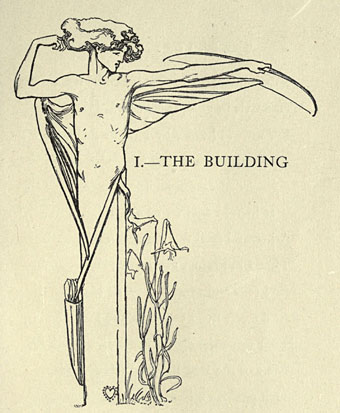
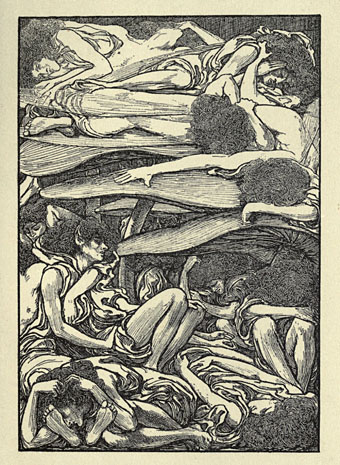
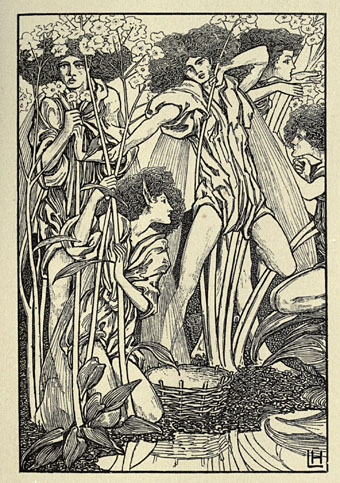
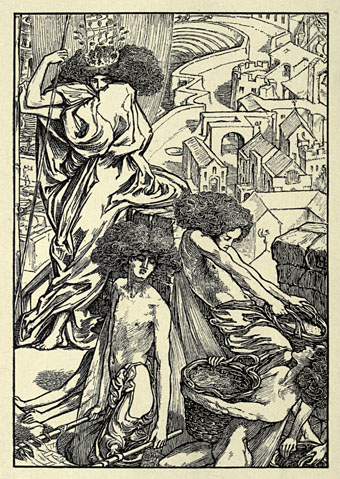
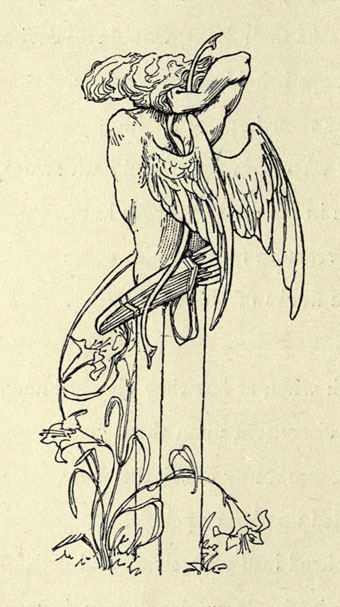
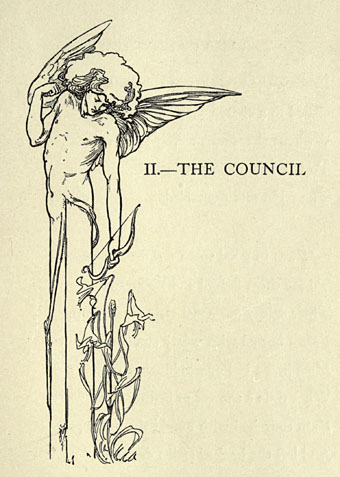
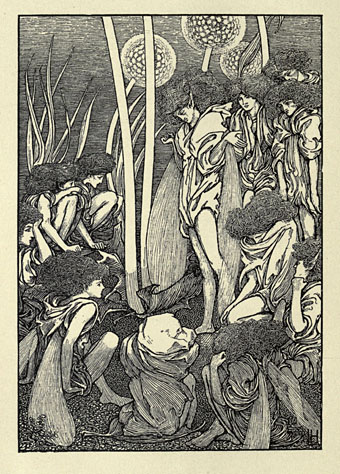
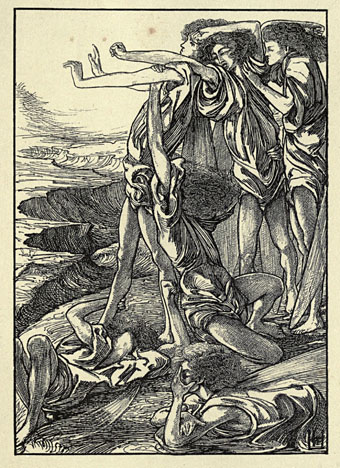
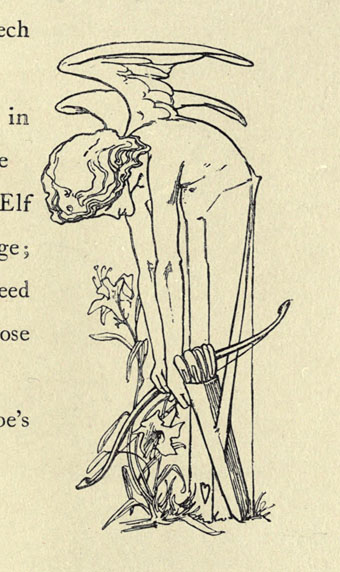
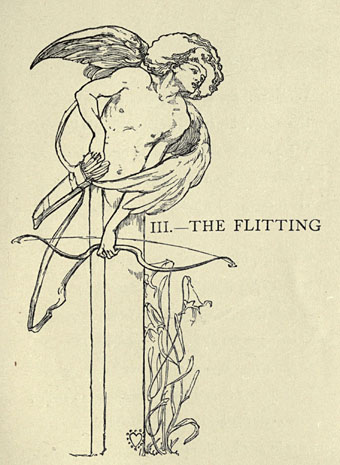
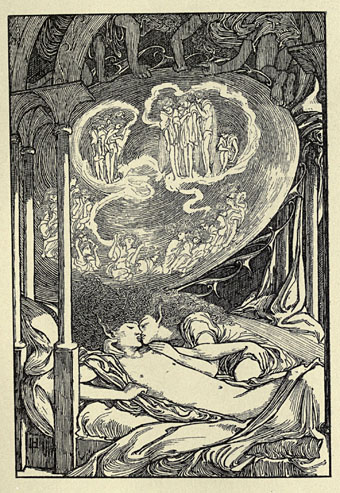
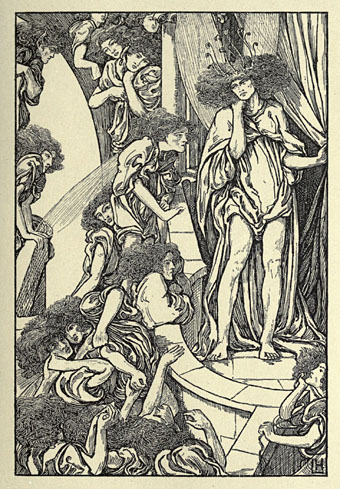
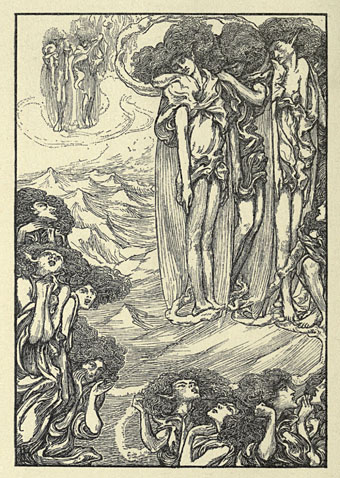
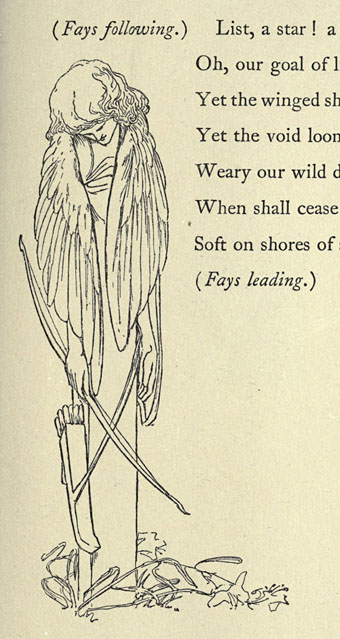
Elsewhere on { feuilleton }
• The illustrators archive
Previously on { feuilleton }
• The Reflected Faun

Lawrence Housman’s illustrations to “The End of Elfintown” owe little to Beardsley but much more to the 1860’s illustrator Arthur Boyd Houghton 1836-1875. The title page is much influenced by Charles Ricketts and the artists of the “Vale/Dial School” of the 1890’s particularly in the background flowers and tendrils and in the elongated figures. It can be argued that both Housman and Beardsley were directly influenced by Ricketts whose work was known to these younger artists before anything by them was published.
I’ve got a couple of books about Ricketts & Shannon so their work isn’t unfamiliar; Ricketts has also been the subject of previous posts such as this:
http://www.johncoulthart.com/feuilleton/2009/07/12/charles-ricketts-hero-and-leander/
I’ve not seen anything in Ricketts’ work that matches those rose shapes, they’re much more like the flowers Beardsley was drawing in the Morte d’Arthur and Salomé, hence the comparison.
I think that Housman, Beardsley and Ricketts were influenced by William Morris and his border designs for the Kelmscott Press books which were used as early as 1891 and would certainly have been seen by them and other artists of the period.